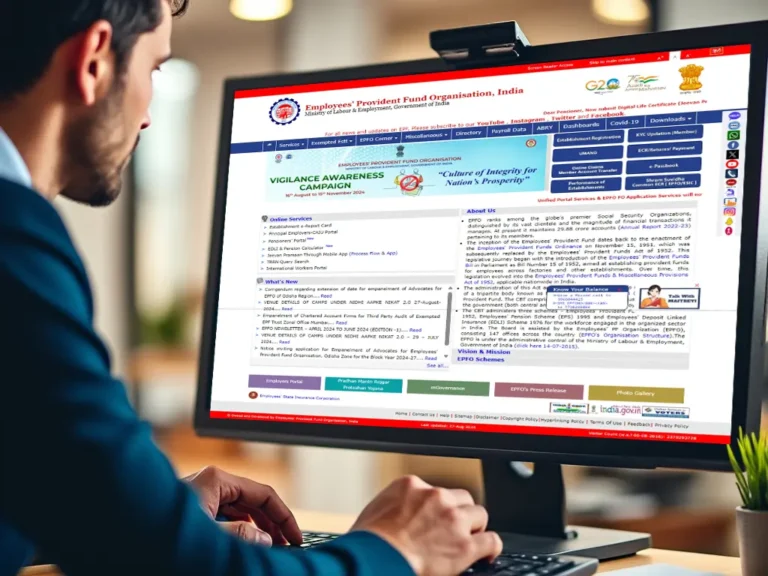What are the tax implications of withdrawing your Provident Fund early?

Introduction to Early Provident Fund Withdrawal
The Employees’ Provident Fund (EPF) is one of the most significant retirement savings schemes in India, providing financial security to employees after retirement. However, there may be instances where an individual needs to withdraw their Provident Fund (PF) early due to financial emergencies or career transitions. While early withdrawals are permitted under specific conditions, they come with tax implications that employees must understand before proceeding. This article delves into the tax aspects of early PF withdrawal and explains how you can minimize your tax liabilities.
Tax-Free Withdrawals: The 5-Year Rule
One of the most critical factors determining the taxability of your PF withdrawal is the duration of your contributions. According to the Income Tax Act, if an employee withdraws their PF balance before completing five years of continuous service, the withdrawal becomes taxable.
| Criteria | Tax Treatment |
|---|---|
| Service of less than 5 years | Withdrawal amount is taxable. |
| Service of 5 years or more | Withdrawal amount is tax-free. |
Exceptions to the Rule
- If the service is discontinued due to illness, employer’s inability to continue business, or other circumstances beyond the control of the employee, early withdrawals are not taxable.
- If you transfer your PF balance to a new employer, the previous service period is considered, ensuring continuity.
For additional clarity on exemptions and rules, refer to EPFO’s Website.
Components of PF Withdrawal Subject to Tax
When you withdraw your Provident Fund early, the entire withdrawal amount is not treated as income. Instead, it is broken down into taxable components. These include:
- Employee Contribution: Exempt from tax since it is contributed after tax deduction.
- Employer Contribution: Taxable as “income from salary.”
- Interest on Employee Contribution: Taxable under “income from other sources.”
- Interest on Employer Contribution: Taxable under “income from other sources.”
Here’s a simplified breakdown of the components:
| Component | Taxability |
|---|---|
| Employee Contribution | Tax-free |
| Employer Contribution | Taxable as salary income |
| Interest on Employee Contribution | Taxable as income from other sources |
| Interest on Employer Contribution | Taxable as income from other sources |
This classification highlights the need to evaluate your financial situation before opting for early withdrawal.
TDS on Early PF Withdrawals
Tax Deducted at Source (TDS) is applicable on PF withdrawals if the amount exceeds ₹50,000 and the employee has not completed 5 years of continuous service. Here’s how TDS is applied:
- With PAN: TDS is deducted at 10%.
- Without PAN: TDS is deducted at 30%.
- Form 15G/15H: If your total income is below the taxable limit, you can submit Form 15G (for individuals below 60 years) or Form 15H (for senior citizens) to avoid TDS.
| Condition | TDS Rate |
|---|---|
| PAN submitted | 10% |
| PAN not submitted | 30% |
| Form 15G/15H submitted | No TDS |
For detailed assistance with tax filing and exemptions, consult EPF Buddy’s expert services.
Income Tax Return (ITR) Filing and PF Withdrawal
If TDS is deducted on your PF withdrawal, you must include this income while filing your Income Tax Return (ITR). The withdrawal amount, categorized under salary income and other sources, should be reported in the respective sections of the ITR form.
Steps to Report PF Withdrawal in ITR:
- Calculate the taxable portion of your withdrawal.
- Report employer contributions under “Salary Income.”
- Add interest income under “Other Sources.”
- Deduct TDS already paid from your total tax liability.
Failure to include this income while filing your ITR may lead to notices from the Income Tax Department. For a hassle-free tax filing process, visit EPF Buddy’s Contact Page for guidance.
Partial Withdrawals: Tax Implications and Exceptions
In some cases, employees may not withdraw their entire PF balance but opt for partial withdrawals for specific purposes. These withdrawals are subject to specific rules:
- Marriage: Partial withdrawal is allowed up to 50% of the employee’s contribution.
- Education: Partial withdrawal is permitted for higher education expenses.
- Medical Expenses: Tax-free withdrawal is allowed for critical illnesses or hospitalization.
- Home Loan Repayment: Employees can withdraw a portion of their PF balance to repay home loans.
Partial withdrawals for the above purposes are exempt from tax, provided the withdrawal is within the prescribed limits.
| Reason for Withdrawal | Tax Treatment |
|---|---|
| Marriage/Education | Tax-free |
| Medical Expenses | Tax-free |
| Home Loan Repayment | Tax-free |
These exemptions highlight the benefits of planning your PF withdrawals carefully.
Key Tax Benefits of PF Contributions
While early withdrawals may attract tax liabilities, contributions made to the EPF provide significant tax benefits. Under Section 80C of the Income Tax Act, employee contributions up to ₹1.5 lakh are eligible for tax deductions. This makes the EPF a powerful tax-saving instrument.
Additionally, the interest earned and employer contributions are tax-free, provided the employee does not withdraw early. For more details on EPF tax benefits, explore the About Us section on EPF Buddy.
Avoiding Tax Implications on PF Withdrawal
To minimize the tax burden of early PF withdrawal, consider the following strategies:
- Transfer PF Balance: If you change jobs, transfer your PF account instead of withdrawing it. This ensures continuity of service.
- Complete 5 Years of Service: Avoid early withdrawals until you’ve completed 5 years of continuous service.
- Plan Partial Withdrawals: Opt for partial withdrawals only for tax-exempt purposes like medical emergencies or education.
By following these strategies, you can safeguard your savings from unnecessary tax deductions.
Common Mistakes to Avoid During Early PF Withdrawal
- Withdrawing Entire Balance: Avoid withdrawing the full amount unless it’s absolutely necessary.
- Not Linking UAN with PAN: Failure to link your UAN with PAN results in higher TDS deductions.
- Ignoring Tax Filing: Always report the withdrawal amount in your ITR to avoid penalties.
For personalized advice on managing your PF account and withdrawals, visit EPF Buddy’s Services.
EPF Buddy’s Role in Managing PF Withdrawals
Navigating the tax implications of early PF withdrawals can be challenging. That’s where EPF Buddy steps in. With our expert guidance, you can:
- Understand the taxability of your withdrawal.
- Plan partial withdrawals for tax-free purposes.
- File accurate ITRs to report withdrawal income.
By partnering with EPF Buddy, you can ensure a smooth and tax-efficient withdrawal process, making the most of your hard-earned savings. For assistance, reach out to us via our Contact Page.






